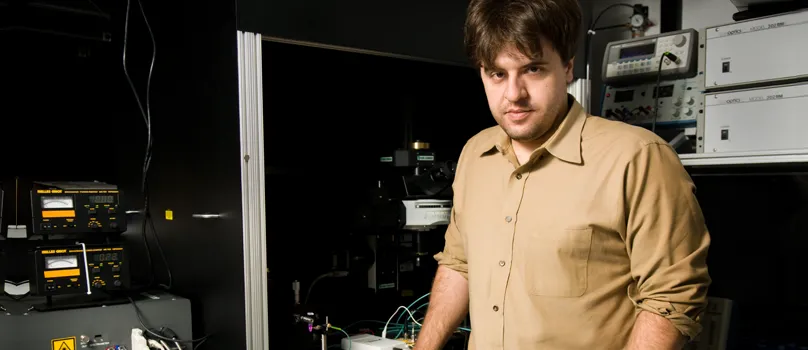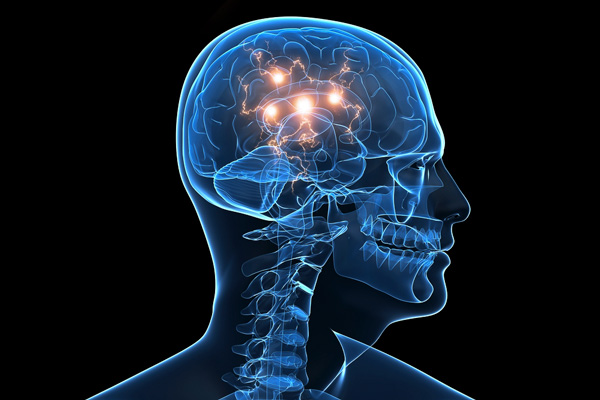
Stanford Report- March 11, 2013 - by Bjorn Carey
Neuroscience has come a long way since the Roman physician Galen prodded gladiators' head wounds and surmised that the brain, and not the heart, was the home of human intelligence. Nowadays, scientists can create three-dimensional maps of intact neuronal networks, observe individual neurons firing in real time within animals, and even control how those neurons fire using a technique that involves gene therapy and lasers.
And yet, we know relatively little of just how the brain works. Now, in the latest issue of Science, a super-team of neuroscientists, geneticists and engineers propose the Brain Activity Map, a large-scale collaborative effort that will draw from multiple scientific disciplines to create and apply a new generation of tools to map and control brain activity.
Stanford Professor Karl Deisseroth joins a super-team of scientists to propose the Brain Activity Map, a collaborative initiative akin to the Human Genome Project, to better understand how the brain works.
Like the Human Genome Project, the Brain Activity Map program will tap the hive mind of experts to make headway in the understanding of the field. Engineers and nanotechnologists will be needed to help build ever smaller devices for measuring the activity of individual neurons and, later, to control how those neurons function. Computer scientists will be called upon to develop methods for storing and analyzing the vast quantities of imaging and physiological data, and for creating virtual models for studying brain function. Neuroscientists will provide critical biological expertise to guide the research and interpret the results.
The authors encourage input from academia, government and private industry, with the goal being to support broad efforts across biology and the applied sciences without relying on preconceived ideas or redirecting support from existing work. Anyone with a good idea is welcome to pitch in.
"Much of the ocean floor is also unmapped territory, but there are clear ideas and hypotheses for the general form that it takes, and the processes that shape it," said co-author Karl Deisseroth, a professor of bioengineering and of psychiatry and behavioral sciences at Stanford. "What is both mysterious and exciting about the brain is that we don't have comparably mature ideas for the fundamental form taken by processes underlying high-level functions such as cognition, reasoning, hope or how animals create a unified perception of reality from detailed multimodal sensory information.
"By bringing together people from fields who wouldn't normally be talking to each other," he said, "I think we'll spark some really exciting ideas."

Sebastian Kaulitzki: The proposed Brain Activity Map would be a large-scale collaborative effort drawing from multiple scientific disciplines to create and apply a new generation of tools to map and control brain activity.

The payoff from the project will revolutionize medicine, the authors write. For example, Deisseroth prescribes medication to patients suffering from anxiety or depression. But the brain functions by triggering specific pathways in discrete areas of the brain at different times, while pharmaceuticals alter neurochemicals throughout the brain, which can lead to undesirable side effects and decreased efficacy.
"Before we can really fix things, we need to know what is supposed to be happening," Deisseroth said. "This is part of a very long process to understand what the brain is doing, then understand how it fails, and then, finally, come up with ideas for how to fix it more precisely."
To get the project rolling, Deisseroth and his co-authors call for fostering conversations between scientists with new ideas from nanotechnology, physics, engineering, neuroscience and more. A basic premise of the project is that nobody knows where the best ideas or tools will come from, so a very wide net must be cast.
Deisseroth is known for inventing a technique, known as optogenetics, that uses light to control neuronal activity.
Another of his programs, the Cracking the Neural Code (CNC) initiative, has connected and funded researchers from Stanford's different schools in an effort to spur innovation in brain research on campus. "We're at the very early stages, but I think that the CNC will likely help serve as a nucleus for channeling the progress and efforts of the Brain Activity Map," he said.
To catalyze activity, the authors point out that just as the project will open up new avenues of research and therapy, it also has the potential for significant financial gains: The Human Genome Project turned a $3.8 billion investment into $800 billion in economic impact.

